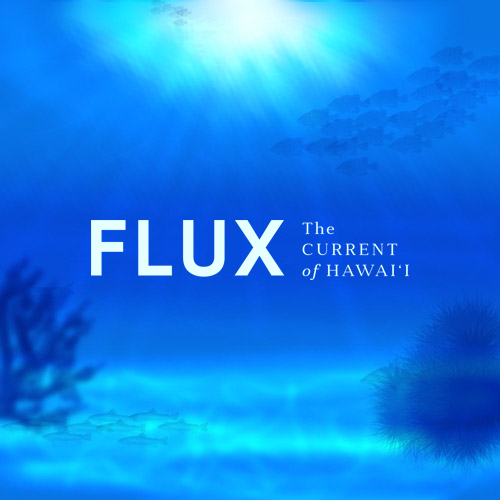Experiencing Honolulu Pride is sublime: the sweeping Pacific views and myriad food options at the Prince Waikiki Hotel, the comforting humid air, the perfectly temperate ocean water, and the welcoming faces at the Pride festival and local gay bar Bacchus Waikiki. But the pinnacle experience of the queer aloha spirit last October wasn’t found on the parade route, at after-parties, or even on Queen’s Beach. Instead it was found at the 134-year-old Bishop Museum, where I was lucky enough to catch the incredible exhibit, “The Healer Stones of Kapaemahu,” on its closing day, which coincided with Pride’s start.
If you missed Bishop Museum’s exhibit on the Healer Stones of Kapaemahu you can head to The Hawaii Convention Center to view replicas of The Healer Stones of Kapaemahu outside Theater 320. “This exhibit shines a light on the deep history of these stones and furthers the Center’s sense of place by showcasing this important Waikiki landmark, which is just minutes away,” said Dean Hamer, a film director and curator of The Healer Stones of Kapaemahu exhibit.
The Hawai‘i Convention Center unveiled two new Hawaiian cultural exhibits — an extensive featherwork installation and a display exploring the Healer Stones of Kapaemahu — Thursday on its third floor with a blessing ceremony. “The work of these renowned artists brings to life the stories of Hawai‘i’s rich culture and history, enhancing each guest’s experience and appreciation for our islands,” Hawai‘i Convention Center General Manager Teri Orton said in a statement. “As a gathering place for our communities and thousands of visitors from around the world each year, we are pleased to make these exhibits accessible for everyone to enjoy.”
Hinaleimoana Wong-Kalu, or Kumu Hina for many, is known for work in the art of Hula. She is a filmmaker, an artist, and an activist and now an author after the release of her book “Kapaemāhū”. The book tells the traditional story of four legendary mahu or individuals with dual male and female spirit, who long ago brought healing arts from Tahiti to Hawaiʻi and imbued their healing powers into four large stones in Waikiki today. The book is written in both English and in ʻōlelo Niʻihau.
Judith Light to Executive Produce Animated Short ‘Falling’ (EXCLUSIVE)
Emmy and Tony winner Judith Light has signed on as an executive producer for “Falling,” an animated short film from the filmmakers behind “Kapaemahu” — Daniel Sousa, Dean Hamer, Joe Wilson and Hinaleimoana Wong-Kalu — which was shortlisted for the best animated short Oscar in 2021. While “Kapaemahu” focused on Hawaii’s legendary gender-fluid healers (and expanded into a children’s book, feature documentary and immersive museum exhibition), “Falling” follows the romantic adventures of a valiant island warrior, a handsome young man and an octopus brought together by a twist of fate. The story is described as “an epic romantic adventure that instills hope in a time of rising prejudice and hate.”
Trans-Pacific Māhū Ancestors: Reclaiming Hawaiian Trans Identities/Spirits
In a world full of anger, hurt and worry, a Hawaiian legend of dual male/female identities has been resurrected to reclaim an ancient tradition and bring healing to our modern lives. Such a story is necessary today as transgender people are openly attacked as easy targets of hatred and discrimination, scapegoats for all that is wrong with "The Left" and "Wokeness." Contemporary Hawaiians are reclaiming ancient cultural understandings of gender to provide us with expansive ways of being and the freedom of possibilities beyond the narrow gender binary of Western civilization.
In the middle of Waikīkī, Hawai‘i’s most crowded, most photographed, most highly trafficked neighborhood, there is a monument to Native Hawaiian culture that is also, perhaps, one of our most overlooked. In plain view, between the ever popular Duke Kahanamoku statue and elegant Moana Surfrider hotel, are four large, but otherwise unassuming stones that hold a powerful and misunderstood history. Known as Ka Pōhaku Kahuna Kapaemāhū (“the healer stones of Kapaemāhū”), these ancient stones, which have been sanctified in a fenced enclosure since 1997, represent four respected healers who were māhū, the Hawaiian word for a person of dual male and female spirit. Any ascription to their māhū association, however, is glaringly absent from the monument’s signage. The omission isn’t surprising: More than two centuries after Christian missionaries first arrived in the archipelago, many Native Hawaiian histories and traditions continue to be erased and obscured, deemed too unpalatable for Western mores.
Kamehameha Schools Kumu Create Dual-Language Curriculum for Kapaemahu
By kumu, for kumu. That is the guiding framework two Kamehameha Schools Kapālama kumu used to create a teaching curriculum about the mo‘olelo of Kapaemāhū, in partnership with Kanaeokana and Kanaka Pakipika. The mo‘olelo, which Kanaka Pakipika brought to life in an award-winning animated short film, tells the story of four kahuna of dual male and female mind, heart and spirit (māhū) who brought the healing arts from Tahiti to Hawai‘i. When Kanaka Pakipika proposed creating a curriculum for students inspired by the film, KS’ Kealaiwikuamo‘o senior project manager Manuwai Peters, Kumu Kahanuola Solatorio KSK’10 and Kumu Kalehua Kawa‘a KSK’07 answered the call.
ABC News’ Kyra Phillips reports on a new museum exhibit in Honolulu that seeks to reacquaint Hawaiians with an ancient tribute to the gender-fluid ways of being māhū.
Although Wong-Kalu was fortunate to learn the mo‘olelo when she was 18, a narrative integral to her own journey as māhū, many other Hawaiians, locals, and malihini remain unaware to the stones at the heart of Waikīkī. For this reason, Wong-Kalu and filmmakers and life partners Dean Hamer and Joe Wilson produced Kapaemahu, an animated retelling of the mo‘olelo told in the Ni‘ihau dialect that was most likely spoken by the māhū healers. Through the artistry of animator Daniel Sousa, the film is bathed in earthy colors and told through soft and unadorned figures, modesties which underscore the magic of the narrative. “Dean, Hina, and I all emerged in a society that was not only negative but cast aspersions toward people like us that made our walk even more difficult,” Wilson explains. “When we learned about this site, these stones, and the story it reflects, we saw the potential it had to be one of those amazingly powerful symbols, not just for people in Hawai‘i but for people who visit Hawai‘i, who could start to see a place for themselves in the world through this mo‘olelo and site that celebrates this aspect of life.”










